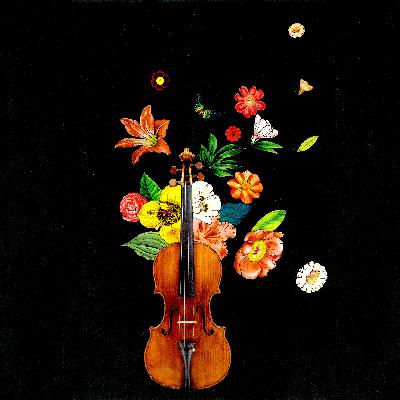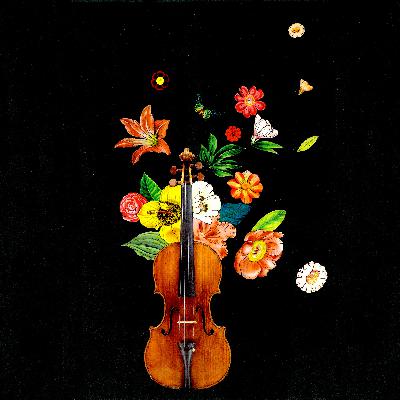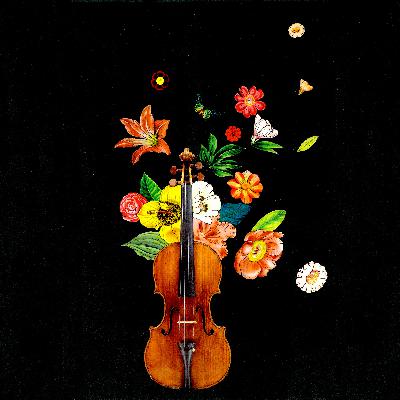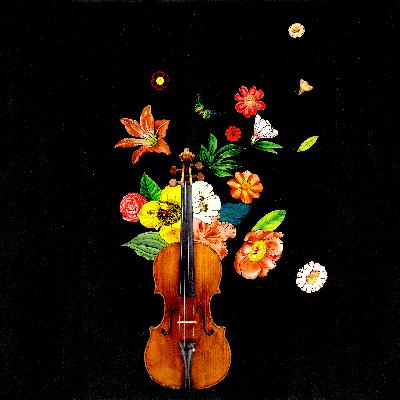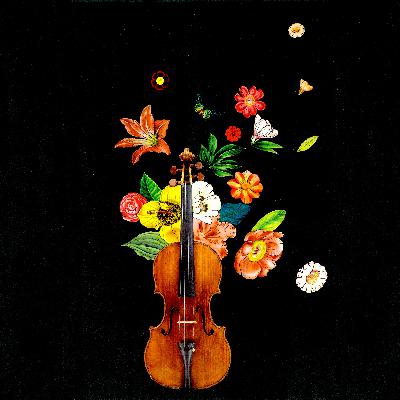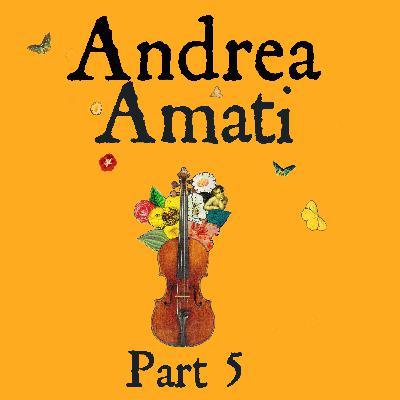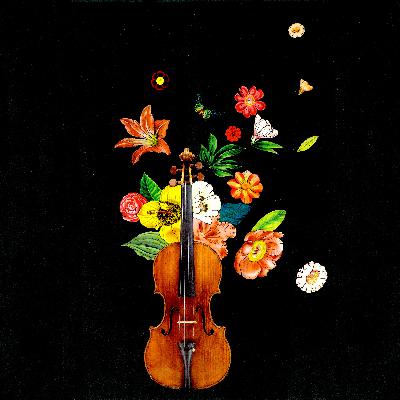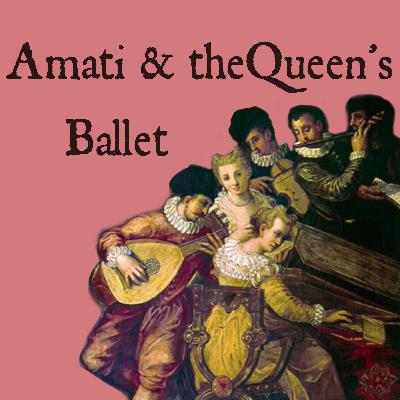Ep 7. Andrea Amati Part 4, Don’t mention the war, sending threats on violins now are we?
Description
We look at how the French Monarchs used music as a political tool and the symbols on the instruments Andrea Amati made were not just a pretty decorations but part of court intrigue and a declaration of war.
If you're captivated by the allure of Renaissance courts, the artistry of violin making, and the power of music as a symbol of prestige, the musical court of Catherine de Medici is a good place to start.
The French wars of religion between Catholics and Protestants were in full swing, this is even witnessed in the choice of instruments made by Italian violin makers and the symbols painted on them by renaissance artisans, in this episode we let these historical instruments tell their story.
In this episode I speak to Expert Benjamin Hebbert, Violin maker Carlo Chiesa, Historian Dr Susan Broomhall, Fashion Historian Dr Emily Brayshaw and Historian Dr John Gagne.
The Music you have heard in this podcast is as follows.
Café Chianti – Jonny Boyle
Bloom – Roo Walker
The retirement of major Edward – Jacob Taylor Armerding
Ambush – Brandon Hopkins
Unfamiliar faces – All good Folks
Harpsichord Fugue – No Copyright music
A Peasant’s Sonnet – Jonny Easton
Banquet of Squires – Jonny Easton
ACO Home to Home - Liisa Palallandi and Timo-Veikko Valve
Transcript
During the Middle Ages, Cremona was under the dominion of the Holy Roman Empire. At that time, the people of the city were forced to pay an oppressive tax of three kilograms of gold every year to the emperor, which for convenience was melted into a sphere. One day, fed up with paying this tax, the people of Cremona decided it was time to break away from imperial rule. And so the Mayor Giovanni Baldessio was challenged by the Emperor King Henry IV to a duel in order to settle the tax dispute. Mayor Baldessio was able to knock the king from his horse, thus sparing Cremona from its annual three kilogram golden ball tax, which was instead issued to the Mayor's fiancee for her dowry. Back in the city, Giovanni began to be called Zaden de la Bala by all, and he married Berta de Zori, a beautiful girl of noble origins, who brought him many landed properties as a dowry and a big ball of gold. In another version, which is probably more plausible for a civil servant, is that the duel that took place between Cremona's mayor and the emperor was not a sparring match, but a tournament of bowls, or bocce, and Giovanni came out the victor. In memory of that heroic enterprise, an arm with a ball in hand was added to the city coat of arms with the inscription meaning “my strength is in the arm”.
And this is why the Cremonese coat of arms has a hand holding a ball of gold.
Hello and welcome to the Violin Chronicles, a podcast in which I, Linda Lespets, will attempt to bring to life the story surrounding famous, infamous, or just not very well known, but interesting, violin makers of history. I'm a violin maker and restorer. I graduated from the French violin making school some years ago now, and I currently live and work in Sydney with my husband Antoine, who is also a violin maker and graduate of the French school, l'Ecole Nationale de Lutherie in Mirecourt. As well as being a luthier, I've always been intrigued with the history of instruments I work with, and in particular, the lives of those who made them. So often when we look back at history, I know that I have a tendency to look at just one aspect, but here my aim is to join up the puzzle pieces and have a look at an altogether fascinating picture.
So join me as I wade through tales not only of fame, famine, and war, but also of love, artistic genius, revolutionary craftsmanship. Determination, cunning and bravery that all have their part to play in the history of the violin.
Welcome back to Cremona, a city you can find in Northern Italy on one of the bends of the impressively long Po River. Bursting with artisans and commerce in the mid-1500s, we return to our story of instrument maker Andrea Amati and his workshop.
Andrea Amati was not a lone artisan in this city, he was surrounded by merchants and trades people, busy in industry. There were belt makers, embroiderers, blacksmiths, carpenters, boat builders, masons, terracotta artisans, weavers, textile merchants, and printers. Just to name a few of the 400 trades listed in the city at this period.
I speak to Benjamin Hebbert, Oxford based expert, dealer, and author about Andrea Amati's making methods.
It's really difficult to know. I mean, so Andrea Amati, you've spoken about Brescia before and, what I imagine your listeners will have heard of is that Gasparo Da Salo is very much the established figure in Brescia.
Before, they're kind of the same age, but Gasparo Da Salo actually comes out of a tradition which goes back centuries, and Andrea Amati turns up out of absolutely nowhere, and it's Andrea Amati who makes the violin as we know it. It's the thing that we're familiar with, it's the, it's a design which repeats itself throughout his family in Stradivari. Even to the point, there's a, there's a really interesting observation that although the Brescians were making viols and citterns and all sorts of things beforehand, when it comes to the violinists, the violins that survived, they're all copies in one way or another of what they were observing from Cremona.
So this late starter, Andrea Amati, actually seems to be the starting point, even for Brescian violins, even though they come from a longer tradition.
By this time, Andrea Amati had perfected the outline of the modern-day violin. He and his eldest son, Antonio Amati, were working on patterns and jigs to make the instruments for a royal order for the King of France. The order was for 12 large sized violins, 12 small sized violins, 6 violas, and 8 bassoons. Bass, violins, or cellos.
Each instrument was to be decorated with specific symbols and motifs, representing the royal house and portraying an image of how they wanted to be perceived. When Andrea Amati received the commission for these instruments, things were really starting to kick off at the French court. Civil war was brewing and no amount of entertainments by Catherine, the Queen Regent, was going to put out this particular flame.
In the Kingdom of France, a great conflict arose between two groups of people. The Catholics and the Huguenots, the French Protestants. This conflict became known as the French Wars of Religion. It all started when the Huguenots, who included not only peasants and the artisan class, but nobles as well, demanded more religious freedom and equal treatment under the law. This did not sit well with the Catholic majority, who saw the Protestants belief as a threat to their own faith. As tensions rose, violence erupted in the form of sporadic attacks on Huguenot communities by Catholic mobs. The French monarchy, looking to maintain control, attempted to suppress the Huguenots by force. However, the Huguenots, under the leadership of figures such as Admiral Gaspar de Colligny, organized and fought back. Several wars broke out, with battles being fought across the country. The conflict raged on for over 30 years, causing immense destruction and loss of life.
The French court was filled to the brim with intrigue and power struggles. Tensions between the Catholic majority and the Huguenot minority was only increasing. At the centre of it all was the French royal family, trying to maintain control over a divided country. The king and queen, surrounded by their advisors and courtiers, were grappling with finding a solution to this conflict. Meanwhile, in the shadows, whispers of conspiracy and betrayal echoed through the halls. Allies became enemies, and trust was a rare commodity. The court was full of ambitious individuals, each seeking to advance their own interests and increase their power. One day, rumours spread of a Huguenot plot to assassinate the king. The court was thrown into a frenzy, with spies and informers working overtime. It was a dangerous time to be a Huguenot at the French court, and even the slightest suspicion could lead to an arrest or execution.
The Amati instruments destined for the French royal court were part of this much bigger story that was unfolding and would involve many of the contemporary superpowers of the day. Not only did the royal house have to navigate internal court intrigues, there were also the neighbours, Europe’s other powerhouses, all looking to France in its weakened state. Like vultures contemplating a wooden wildebeest on the Serengeti.
To understand where Andrea Amati’s instruments were headed, we will first take a look at the woman who may possibly have been responsible for ordering them in the first place. Catherine de Medici, the original Black Widow. I spoke to Susan Brimhall about this fascinating woman. I know we've already spoken about her, but we're gonna talk about her again.
I got the feeling, sort of looking at Catherine, that she arrives in France and the king that, the prince that, what, was he a prince when she married him? He wasn't king. Yeah, he's a duke. Yeah. So she, she marries him, and I feel like from the Duke, he was a little bit nonplussed about it. And then, she loses her dowry at some point. Is that right?
Well, so there's a bit of a story here that, um. The Medici house, when she is a, is a girl, a young girl, is ducal. So they're a set of dukes. And when she marries into the French royal family, she's marrying very much up into a royal family. So a ducal house is moving up the ranks to have a marriage with a royal house, and the reason that, I mean, normally a royal house will be looking for other royal houses to keep the bloodline at the royal level, if you like. But in this case, the French have been at war, uh, they'


